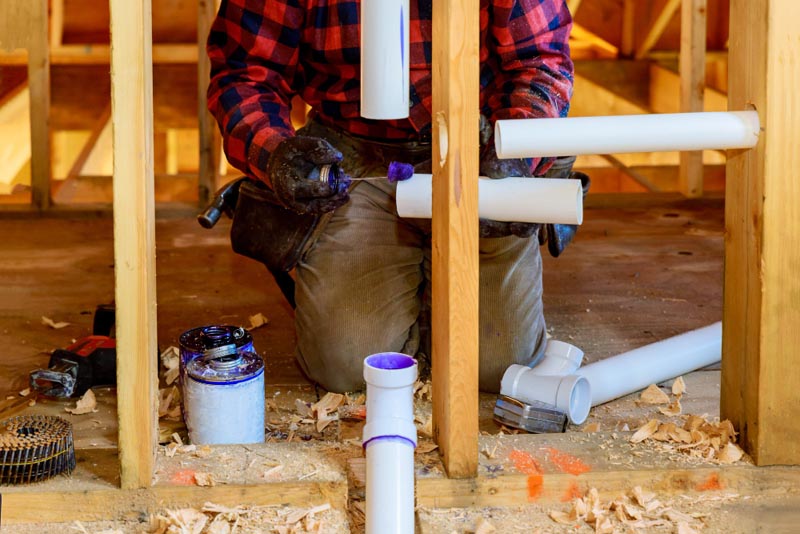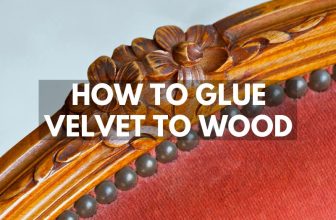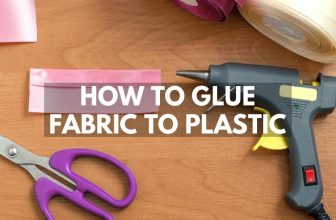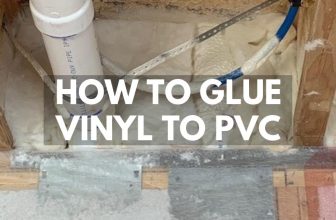
In this guide on how to glue PVC to wood, we share the different types of adhesive you can use and which works best for specific use cases. You will learn the step-by-step approach to preparing, bonding, and curing Wood and PVC together.
Gluing PVC to wood is just like gluing plastic to wood in that the bond can become brittle over time unless you use something like silicone adhesive.
How to Glue PVC to Wood
Polyvinyl Chloride (PVC) is one of the world’s most commonly used thermoplastic polymers. It is widely recognized for its durability, flexibility, and versatility. One of the most popular uses for PVC is in home improvement projects. If bonded securely with wood using urethane-type glue or epoxy adhesive, PVC can be used to create chic and modern waterproof structures, including shelves, cabinets, backdrops, and countertops.
But let’s face it…while PVC has excellent waterproofing properties, this also makes it highly non-porous and impermeable to most adhesives. Gluing PVC to wood is, therefore, not as simple as it sounds. But if you can get a good grip on this slippery material, the results can be impressive, cost-effective, and long-lasting. Here’s everything you need to know about glue PVC to wood.
Which Glue Should You Use for PVC to Wood?
There is something about wood that oozes classic grandeur, charm, and elegance. When combined with the contemporary look of PVC, the results can be quite stunning and picturesque. However, finding the right adhesive to glue these two materials together can be tricky since most adhesives don’t work well with PVC. And with so many glue types and brands on the market, it can be hard to know which one will work best for your project.
The type of glue really depends on the size of your project, as well as the weight that will be bearing down on the glue joint. Here is a quick guide on the best glues to use for PVC to wood:
1. Polyurethane Adhesives
This is perhaps the most versatile, widely used, and easily available glue on the market. It works well on various surfaces, including PVC and wood, and can withstand heavy loads. Vinyl bound on wood using Polyurethane Adhesives are adaptable to a number of operations, such as drilling, nailing, and screwing. You can even paint over it once it is dry.
Polyurethane adhesives come in two forms:
Water-Based
Water-based polyurethane adhesives are less toxic and easier to clean up than their solvent-based counterparts. They also have a shorter drying time, so you can finish your project more quickly. However, water-based adhesives don’t bond as strongly as solvent-based adhesives and are not ideal for outdoor use.
GORILLA Polyurethane is a popular water-activated adhesive that expands into materials to form an incredibly strong bond to virtually anything. It is also waterproof and can be used indoors or outdoors. It has a 2-hour working time and a 24 hrs cure time, giving you the perfect amount of time to make sure everything is lined up nicely before it dries.
Solvent-Based
Solvent-based polyurethane adhesives are a strong, long-lasting, and high-impact option, making them ideal for large projects or those that will be exposed to the elements and chemicals. However, they are more toxic and difficult to clean up if they get stuck to your skin or clothing.
Loctite Polyurethane Construction Adhesive is a great choice for a solvent-based adhesive. It is 4 times stronger than Gorilla Glue and bonds PVC to wood quickly and easily. It is also resistant to heat, cold, and moisture, making it ideal for outdoor use.
2. Super Glues
Super glue is a good option if you are working on a small, time-sensitive project. Super glues create an instant bond and can be applied in a thin layer, making them perfect for delicate work. However, they are not as strong as polyurethane adhesives and are not recommended for heavy-duty projects.
Loctite Super Glue, cyanoacrylate glue, and Gorilla Super Glue are all great options in this category.
3. PVC Cement
This is a specialized adhesive that is designed specifically for bonding PVC. It works by melding the two pieces of PVC and wood together, creating a strong and permanent bond. This is a good option for large projects or projects that will have a lot of weight bearing down on the joint. Unfortunately, while PVC cement is very strong, it is also quite toxic and can be difficult to work with.
Oatey PVC Cement is a good choice for this type of adhesive. It is easy to use and provides a strong, permanent bond.
4. Hot Glue
Hot glue can also be used to glue PVC to wood, especially when dealing with antique and other delicate projects that may require frequent makeovers. Since hot glue can be easily removed, it is a good choice for projects that may need to be disassembled later on.
5. Epoxy Adhesives
If you need a strong, durable bond, epoxy is a good choice. Epoxy is water-resistant and can withstand high temperatures, making it ideal for outdoor use. They are made from high-quality epoxy resins that bond and stay together even in the most extreme conditions. Go for Loctite epoxy instant mix or Titebond Ultimate PVC Trim Adhesive and Sealant, which acts as an adhesive and a sealant.
When working with epoxy, it is important to follow the instructions carefully and to work in a well-ventilated area. Epoxy can be toxic and can cause skin irritations, so it is important to wear gloves and protective clothing when working with it.
How to Prepare PVC and Wood Before Gluing
The quality of your bond will depend on the level of preparation you do before gluing PVC to wood. If either the PVC or the wood is dirty, uneven, or otherwise not properly prepared, your bond will be weaker.
You need to take the time to clean both surfaces and make sure they are smooth before proceeding with the glue. Any dirt, grease, or other contaminants will reduce the effectiveness of the glue.
Rough the PVC with sandpaper and then clean it with mild soap and water. You can also use isopropyl alcohol, but be sure to let the PVC dry completely before proceeding.
To clean wood, sand the surface to create a smooth, even surface. You can use either fine-grit or medium-grit sandpaper, depending on the level of roughness. Once both surfaces are clean and smooth, you can proceed with the gluing.

How to Apply Glue to PVC and Wood
You’ll first need to choose the appropriate glue for the project, depending on the size and type of load the glued joint will need to bear. You also need to consider the environmental conditions the project will be exposed to. If you’re unsure which glue to use, ask a knowledgeable hardware store employee for help.
But a good rule of thumb is to use superglues for small delicate projects, polyurethane or epoxy glue for bigger ones, and hot glues for projects that may require frequent disassembly.
Once you’ve chosen the right glue, it’s time to apply it. Start by applying a small amount of glue to one surface. You can use a brush or your finger to spread the glue, but be sure to wear gloves to protect your hands.
How to Cure PVC and Wood Glue
Carefully align the two pieces of PVC and wood, ensuring they are flush with each other. Once you’re happy with the alignment, press the two pieces together firmly and hold for 30 seconds to a minute.
For superglues, this is usually enough time for the glue to set. For other types of glue, you may need to wait longer for the bond to set, which means that you may need to clamp or weigh the pieces down until the bond has set. You can also bolt, screw, or nail the pieces together to provide extra support while the bond sets. Once the glue has set, remove any clamps or weights and allow the project to dry completely before using it.
Here are typical working and curing times for different types of glue:
- Polyurethane glue: Have 2 hours working time and cure from 24 to 72 hours
- PVC Adhesive: Cures in 12 to 24 hours
- Superglue: works in seconds, cures in minutes
- Hot glue: works in minutes and cures in 30 minutes. Give it 24 hours to fully cure.
- Epoxy glue: Give up to 72 hours to fully cure before drilling, screwing, or nailing into the glued area.
There You Have It!
Working with vinyl glued to wood can be tricky, but if you take the time to prepare both surfaces and choose the right glue, you can create a strong bond that will last a lifetime.
Any ‘squeeze-out’ when the job is complete can be removed with a putty knife and a little mineral spirits. Just be sure to follow the manufacturer’s instructions, work in a well-ventilated area and wear gloves and protective clothing to avoid skin irritations. Your precision, care, and attention to detail will result in a great-looking, long-lasting project.
Tell us what you thought of this guide on how to glue PVC to wood. Did we hit the no-nails on the head? Did we miss something, or you struggled to follow along? Let us know












